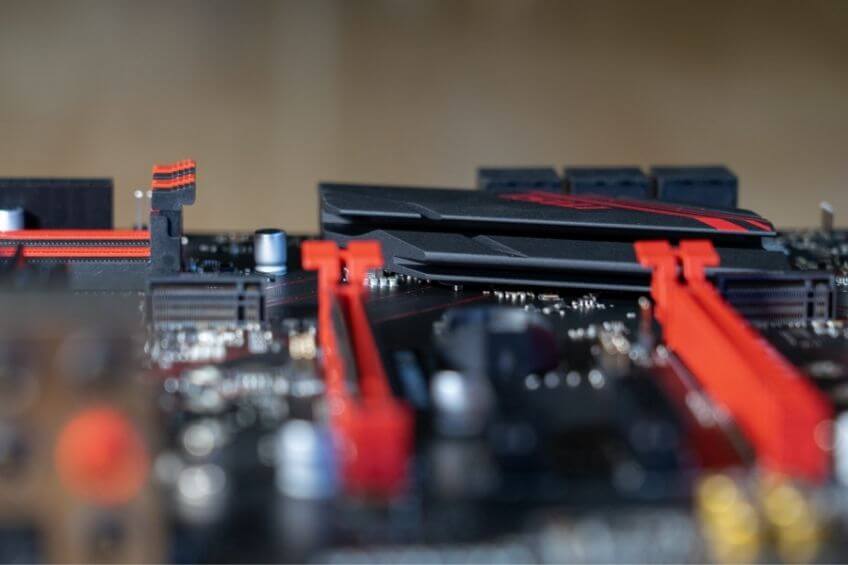Picking the right components for the build you need can be a daunting process at first, but once you dive in, you’ll see that it’s not only surprisingly simple, it can even be fun! It’s similar to assembling flat-pack furniture or a set of LEGOS with instructions; Everything fits together in a very specific way. Just find out what your needs and wants are and plan accordingly.
Necessary Parts
Regardless of what kind of computer you are building, the components you need are going to be the same.
- Motherboard. Every other component plugs into this, responsible for how the other parts communicate and collaborate with each other.
- Processor (CPU). This is the brain of the computer. If the product doesn't mention Thermal Paste, make sure to purchase some.
- Graphics Card (GPU). This is a specialized processor that’s designed and optimized for handling visual data: included in some CPUs.
- Storage Drive. This stores all your games, movies, documents, photos, and anything else you want to keep.
- Memory (RAM). This is different than Storage: memory is short term storage. It’s vital for multitasking or running many intensive tasks.
- Power Supply (PSU). This provides electricity to each and every part of the computer.
- Case. A box that will hold all of the other parts together.
- Operating System (OS). When building your own PC, an OS isn’t installed. Be sure to obtain one and figure out how to install it on the PC: usually CD or USB.
Difference Between Parts
There are often different variations, sizes, and performance differences with parts.
-
Motherboard
These come in different sizes, known as form factors. Standard ATX (also referred to as just “ATX”) are a common form factor. Physically larger than Micro ATXs, they are very versatile and can provide more slots/ports than other form factors. Micro ATXs are better suited for smaller systems that need more power, expandability, and versatility than a Mini-ITX. Mini-ITX consume less power and heat which results in less noise with the biggest disadvantage being its limited connections; These are great if you want a very portable and lightweight device. -
Processor (CPU)
There are two big names in the CPU industry: AMD (Short for Advanced Micro Devices) and Intel. AMD CPUs have historically been lower priced compared to their competition. They often offer a great balance between power and price, which makes them very appealing for those that seek value. Intel CPUs shine if you are seeking performance that is at the upper range of the market. You may pay more for it and may give up some flexibility for this performance, but the CPU itself will usually provide you with the highest performance currently available. -
Graphics Card (GPU)
Three big names in the GPU industry are NVIDIA, Intel, and AMD. NVIDIA is historically well known for having incredible performance, with AMD considered to be a budget choice, and Intel mostly sticking to Integrated GPUs for their CPUs until recently. While it’s still early to call, Intel’s first Dedicated GPU is showing promising performance. -
Storage Drive
There a couple of types of Storage Drives; Three you should be aware of are Hard Disk Drives (HDD), Solid State Drives (SSD), and NVMe drives. HDD are best if you need a large amount of storage on a tight budget. SSD are best if you want quick and responsive storage under 2TB. NVMe offers incredible performance and a small physical size but are currently held back due to their current prices and lack of support on older systems. -
Memory (RAM)
With how technology advances and increasing demands for programs, most users should aim for 8GB to 16GB of RAM. It should be noted that not all RAM is compatible with every system. DDR generation is important because motherboards are built with a specific generation in mind. For example, DDR3 memory won’t work in a motherboard that supports DDR4 memory and vice versa. -
Power Supply (PSU)
Figure out the total wattage of all your other parts and try to purchase a PSU with a significantly higher wattage. Don’t just plan to meet your needs today, instead look down the road a bit and think about what changes you might want to make later. This way, if you decide to get a different part, you won’t have to immediately replace the PSU. Keep an eye out for efficiency ratings, as they affect how much power your PC uses and can keep it cooler. -
Case
This is really up to preference. Despite this, some important aspects of a case are if it can fit and contain all the parts you’ve chosen and if there is sufficient air flow. -
Operating System (OS)
This is really up to preference. Despite this, some parts can determine what OS can be installed. Do your research and check what OS can work in your PC and how to install it.




